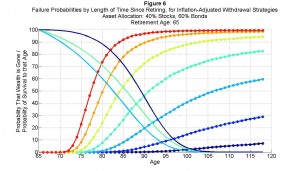The title of this post is a little misleading, as my astute readers would know that your business will also ‘cost’ you 60 to 100+ hours a week, even as it matures.
But, Con has a real ‘business v job’ dilemma:
I’m kinda stuck in a dilemma as to what I should do after graduation in June this year.
I did my undergrad for 3 years, worked for a year and went back to school for another 2 years to get my masters.
I recently got a job at an investment bank making around A$100k after taxes. However, I will be working 100 hour weeks.
I really enjoyed my time when I was a kid going through highschool because I used to sell stuff online and amassed a small fortune about $30k out of that. I don’t think any 17 year old kid had that much money back then. However, I stopped selling stuff because of other commitments and ‘uni life’.
After so many years of formal education, I think that too much education is a hinderance to entrepreneurship. I have about $50k in capital right now, and I am thinking of starting something small.
But on the other hand, if my business doesn’t work, I will be sacrificing a ‘good’ career opportunity + time wasted. I am 23 this year, and my peers have already 2 years of work experience ahead of me.
Unfortunately, I can not give Con – or, anybody for that matter – direct personal advice, but I can tell you about my 16 y.o. son who has a very parallel life and aspirations:
– My son is still in high school and started off selling eBay stuff online and now has ‘graduated’ to a fully-functioning web-site that earns him about $100 a week … I’m sure it will make him a lot more if he knew how to promote it online.
– My son wants to be an investment banker but is not happy about the typical 100 hr work-week and, neither should Con be happy with that set of working conditions … for long!
Since I can’t give Con personal advice, what I would tell my son is:
1. Continue on the educational path that seems to make the most sense / offer the most opportunities (if he asked me if investment banking – and the double law/commerce degree required – was a good choice, I would say “it’s up to you, but I think it’s fine!”)
2. Continue to build his businesses part-time … with luck, his business (or, any future business he decides to start) will replace the time/revenue from a part-time job. Hey, nobody gets to study without working at least part-time, right?
3. At some stage he may need to make the hard decision: continue studying or continue to grow the businesses, but that’s unlikely.
Which ultimately might lead him to exactly where it sounds like Con is today:
My advice – if my son chooses to ask for it – would be to work at least 2 years at the required 100+ hours / week, then make the ‘corporate life v business ownership’ decision; he should walk away with some excellent corporate/professional experience and he should have some serious debt paid off and some big $$$ behind him … in the meantime, I would strongly advice my son not to spend a dime unnecessarily.
For anybody still going through college or starting their first job or business, I say:
Keep living like a penniless college kid, mooching off family and friends like any ‘normal’ college kid does, while you’re busy investing 99% of what you earn.
Then you’ll have the capital (and/or no debts) to do whatever it is that you like!









